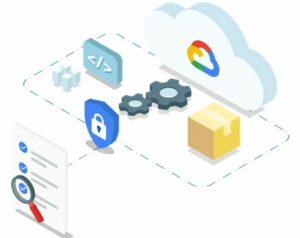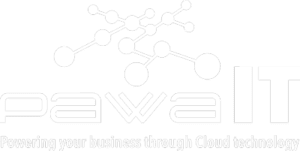In a world of rapid technological advancements ranging from quantum computing to various other services provided by many cloud players, it becomes overwhelming to manage the cloud infrastructure while simultaneously keeping the costs low and leveraging all the facilities the cloud provides. Migration to the cloud brings multiple benefits for users.
These benefits include state-of-the-art security services provided by Google Cloud, option of scaling infrastructure based on business needs, reduced operational costs while improving IT processes, seamless integration with multiple systems( i.e. Active Directory(AD), SAP), and accessibility from any corner of the world without the need of being physically present.
Cloud Challenges
However, just like all good things in life, migrating to the cloud comes with a few challenges. Organizations without the proper knowledge of cloud migration may jump head-first and find themselves in trouble. There are many challenges in taking your entire infrastructure from on-premise servers to the cloud.
However, these challenges, such as the upfront cost of cloud migration(Click here to read more on Planning for Costs before heading to the Cloud), do bring returns in the long-run in the form of increased efficiency, streamlined processes, and lower administrative costs. Another major challenge is resistance to change from employees. Humans tend to resist change, and the entire migration to cloud brings a lot of disruption with new systems and processes. Hence, employees need to be adequately trained for increased cloud adoption. Despite all its simplicity, a cloud environment needs a skilled workforce for optimum utilization.
Solutions To Challenges
This is where we as PawaIT Solutions Ltd, with our extensive experience and expertise in cloud management, come in. We make use of intelligent cloud tools to empower our clientele to be in charge of their cloud infrastructure. We provide solutions to our customers for managing a complex cloud while keeping the costs in check.
We ease your cloud journey via effective management. These intelligent cloud tools allow our customers to have Cloud Visibility, Optimization & Allocation, Cloud Automation, Governance & Reporting, and Security & Health. We ensure an easy onboarding process for our customers even without any prior cloud expertise. Let’s look at some details of the same:
1)Cloud Visibility
Visibility is often referred to as the most crucial aspect/Achilles’ heel of a cloud infrastructure. We ensure users can identify deep cost and usage correlations from gigabytes of data. We help users monitor their costs with cloud visibility by turning unstructured data into interactive monitoring dashboards. The monitoring dashboard, with its hourly level granularity reports, helps users ensure that no resources are being underutilized.
Often cloud users opt for more computing power or storage instances than needed by their workloads, which inflates their cloud costs. We help users understand and manage the relationship between resources being used and resources attached to them. Cloud Inventory comes with asset discovery and point in time resource analysis.
These allow our users to focus on metrics such as memory, network, CPU at an hourly level to keep track of resources running in their cloud and use easy to comprehend network graphs to understand the harmony between resources deployed in the cloud infrastructure and configure alert policies based on set metrics to send alert notifications (firing alarms) .
2)Cost Optimization
Under and overutilization of cloud resources leading to wastage is another common issue faced by users. Our actionable insights and recommendations improve resource utilization and can save you a ton on your cloud expenditure. Getting a precise combination of CPU, memory, disk, and other factors can be tricky, and we provide you with update,upgrade and downgrade recommendations.
Further, making use of reserved instances can save about 30% of your cloud cost and set your own thresholds according to your normalized usage, which in turn leads to long-term savings. Non-essential workloads can be hibernated to save cost on idle instances with Cost Optimizer by analyzing the usage pattern and scheduling recommendations.
Feeling pumped and ready for our part two series, here it is: Part 2- Get The Most Out of Your Cloud Infrastructure








